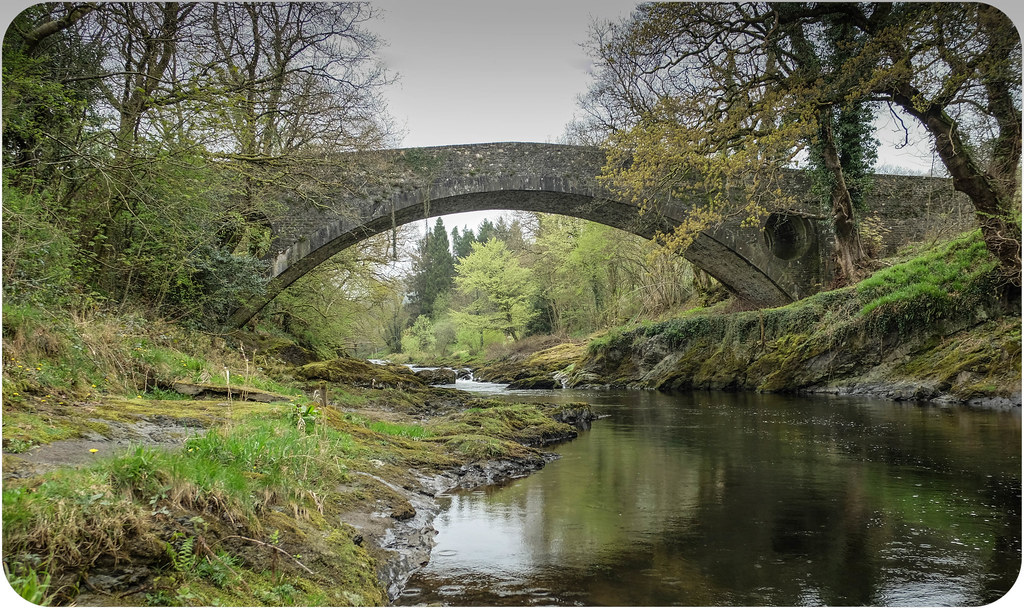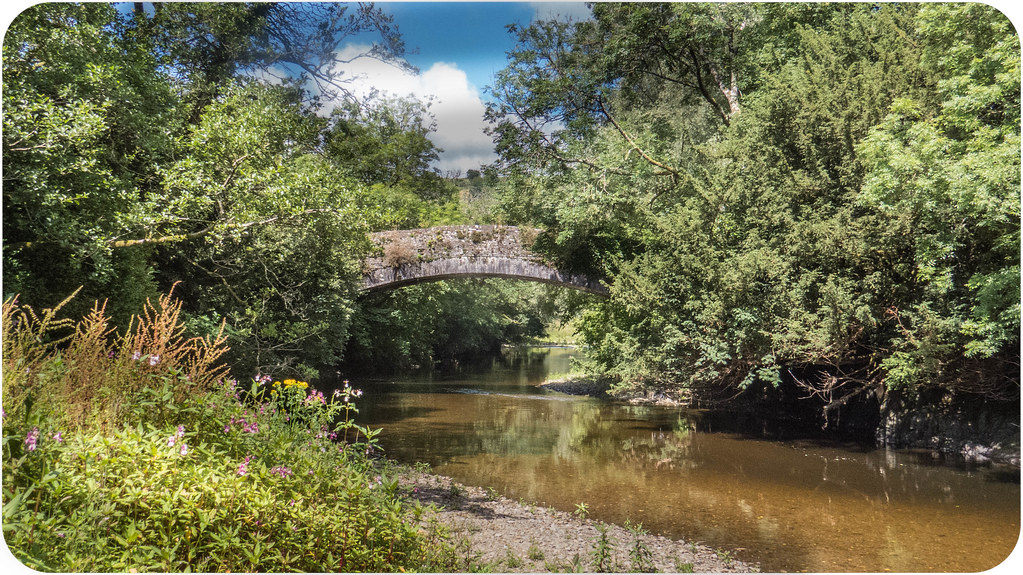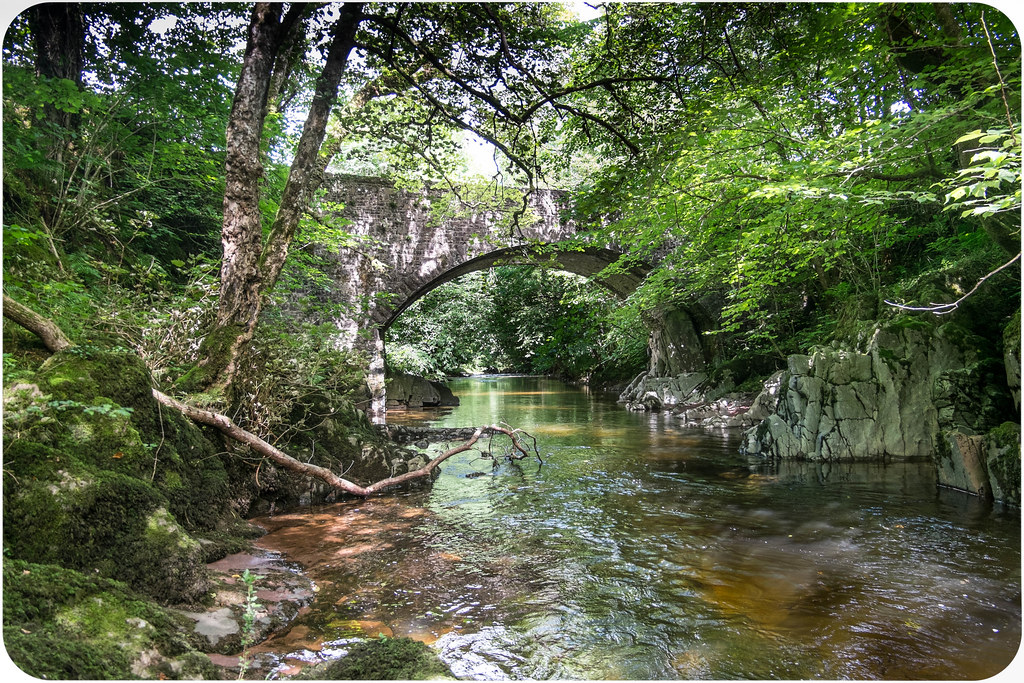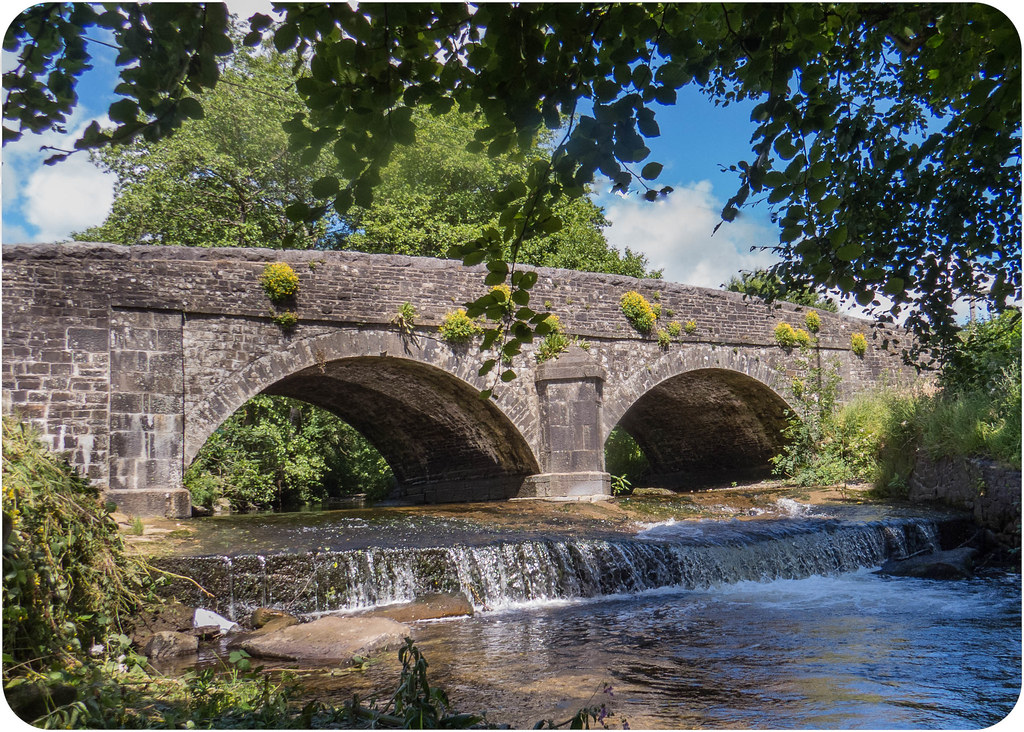 |
| Llandybie bridge across the Marlais. |
History
A bridge probably of the mid- or late-C19.
Exterior
A stone bridge with slightly skewed high segmental main span of
about 6m. To the east side of the main channel is a small span of
about 1.5m wide, similarly constructed, which may be connected
functionally with the nearby listed corn mill as a tail-race arch.
The bridge is in masonry consisting mostly of axe-squared limestone
laid in snecked courses. Much of the masonry including the voussoirs
is rock-faced.Carriageway about 7m wide between parapets about 0.9m high. Flat parapet copings also rock-faced where of limestone; some of the copings are in gritstone. At the south east the parapet has a small return to the river bank.
Reasons for Listing
A C19 bridge of vernacular character in a group with the listed
village corn mill and miller's house.OS Grid: SN619154




































